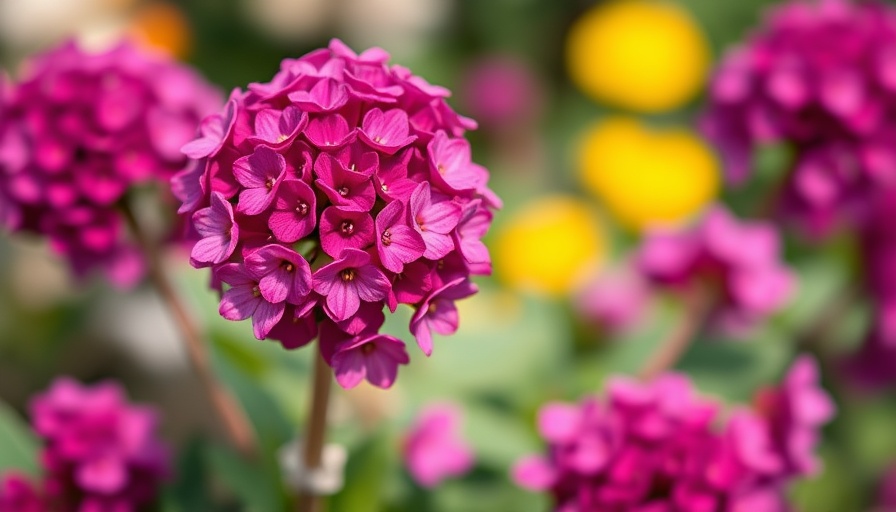
Why Grow ‘Purple Emperor’ Sedum?
‘Purple Emperor’ sedum is not just another plant; it’s a showstopper in any garden. Known for its rich violet foliage and attractive pinkish-red flowers, this hybrid sedum brings a unique touch to landscapes, standing out beautifully against the more common green plants. As a flowering perennial, it thrives in various settings—from vibrant gardens to quiet corners, easily enhancing outdoor spaces.
Growing Conditions for Success
To cultivate 'Purple Emperor,' first consider its ideal growing conditions. This hardy plant flourishes in USDA Hardiness Zones 3 to 9, meaning it can survive a range of climates. It prefers full sun and well-draining soil with a slightly acidic to neutral pH. When these conditions are met, you’ll witness its healthy growth—typically reaching heights between 12 to 18 inches, making it suitable for beds, borders, and even container gardening!
The Art of Planting
For best results, plant your sedum in loose, lean soil, avoiding heavy moisture which can lead to rot. Space each plant appropriately to allow for its spread; the upright, mounded growth habit of ‘Purple Emperor’ allows for a tidy appearance, making it ideal for crowded spaces. Adding a layer of mulch can help regulate soil temperature and moisture, supporting overall health.
Pollinators Love ‘Purple Emperor’
One of the charming features of the ‘Purple Emperor’ is its blooming period, which typically begins in midsummer and continues until fall. The star-shaped flowers are not only visually appealing but are also favorites among pollinators like bees and butterflies. By including sedum in your flower garden, you can create a vibrant ecosystem while enjoying a beautiful display. This aspect makes it a fantastic choice for those interested in organic gardening and maintaining biodiversity in their gardens.
Maintenance Tips for Long-Lasting Blooms
While ‘Purple Emperor’ is relatively low-maintenance, keeping an eye out for common pests and diseases is crucial. Regularly check for aphids and mealybugs and treat them early to prevent any damage. Additionally, deadheading spent blooms encourages new growth and prolongs the blooming season, making your garden look fresh longer. Incorporating organic fertilizers during the growing season can also boost the health and vibrancy of your plants.
Creating a Visual Impact
Incorporating ‘Purple Emperor’ into your landscaping ideas is straightforward due to its eye-catching colors. Combine it with contrasting green foliage, and perhaps introduce some ornamental grasses for added texture. Consider using this plant as a focal point in container gardens or as part of a mixed border. Remember, visual impact is not just about creating beauty—it's also about nurturing a personal connection with nature.
Conclusion: Embrace the Joy of Gardening
Caring for ‘Purple Emperor’ sedum can significantly enhance your garden. Not only does it offer aesthetic appeal, but it also supports pollinators, contributing to a healthier environment. This hybrid sedum is an excellent entry point for anyone interested in diving deeper into gardening projects. Whether you’re an experienced gardener or a beginner, adding ‘Purple Emperor’ to your collection is a step towards a more vibrant and eco-friendly garden.
 Add Row
Add Row  Add
Add 




Write A Comment